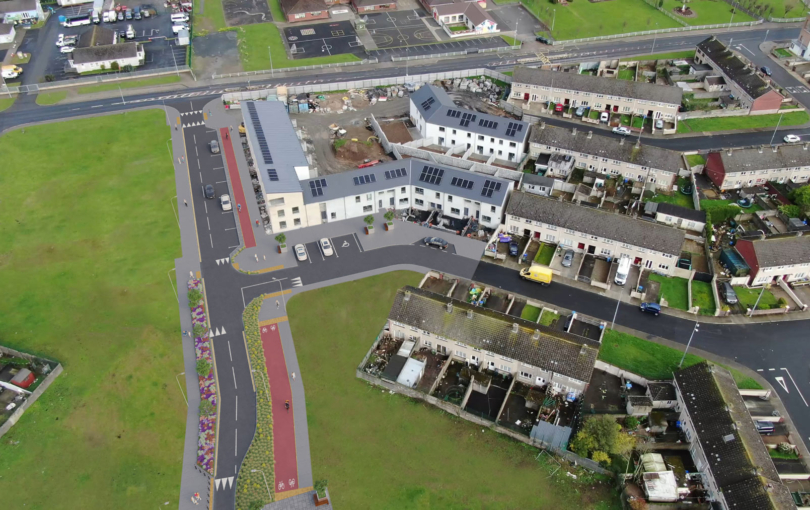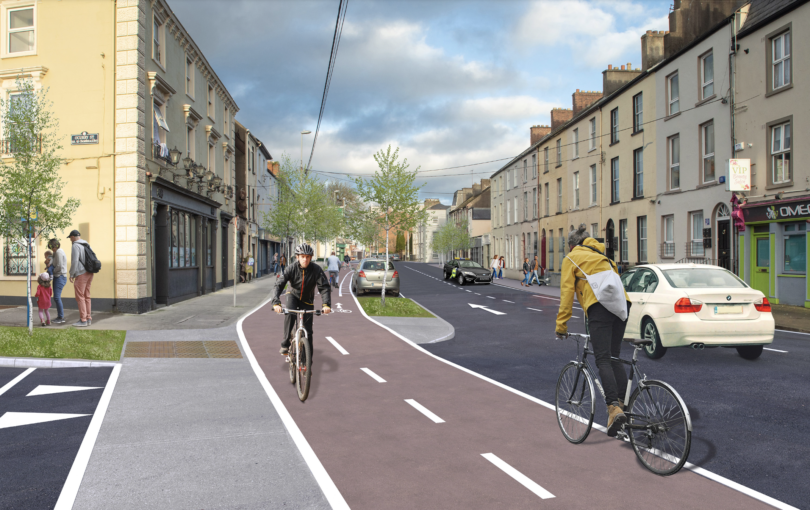In this article, we are using plain language to explain the variations of cycle lane types and the context in which they should be used in order to reach maximum effectiveness
What is a cycle lane?
A cycle lane in its simplest form is the designated lane for cycle traffic either within or adjacent to the roadway.
How wide should a cycle lane be?
Cycle lane width can vary depending on whether it is one-way or two-way, the presence of any inside or outside edge elements such as kerbs or walls and the speed limit of any adjacent street or roadway. Cycle lanes should allow for 2 abreast cycling – as per National Cycle Manual and international best practice – therefore a one-way cycle lane should be around 2 – 2.5m and a two-way cycle lane around 3.5 – 4m.
Do all streets need cycle lanes?
No. If the volume and speed of motor traffic is low and the street is narrow (less than 5.5m) then it is possible for cycle traffic to share the road with motor traffic. Typical scenarios where this should be possible is in residential areas although Irish road and street design, even in residential areas, still prioritises the movement of motor cars over everyone else so integrated cycling should only be allowed if the streetscape has been designed appropriately.
Do all cycle lanes need to be segregated?
Ideally yes. If either the cycle traffic or motor traffic volumes are high enough or the motor traffic speed exceeds 30kph then the cycle lane should be segregated. There are scenarios however where a painted cycle lane can suffice but such lanes types should be used sparingly and only under the appropriate road layout conditions.
Should cycle lanes be red?
Not necessarily but it helps people recognise cycle lanes and infrastructure more easily. There is no international standard for cycle lane colour. In the Netherlands, it has become the de facto standard to use red even though there isn’t any official guideline. In Denmark they use blue to distinguish cycle lanes from motor traffic lanes but only at junctions where cycle and motor traffic criss-cross each other. Ireland’s National Cycle Manual follows a similar guideline of only colour (red) to distinguish cycle lanes at junctions.
Do cyclists have to use cycle lanes?
No. The law requiring people cycling to use cycle lanes where provided was revoked in 2012. The reason for this was the recognition of the unsafe state of Ireland’s cycle infrastructure and that by forcing cyclists to use such poor quality infrastructure was unreasonable.
When 80% of trips are made by foot or bike—as they are in Delft—car-based engineering (traffic lights, stop signs) becomes entirely redundant.
Join us for a 3 km ride on the cycle paths and bicycle streets of the city, and see if you can count how many time we‘re forced to stop. pic.twitter.com/o5RIAjODhe
— Modacity (@modacitylife) April 9, 2019
How many more people would cycle if your city’s streets were this inviting?
How many would leave their cars at home if their choice was made this easy?
Don't design streets that make the 5% already biking marginally safer. Build them to entice the other 95% back on their bikes. pic.twitter.com/UXrfB8I1FW
— Modacity (@modacitylife) April 6, 2019


